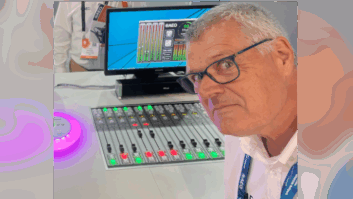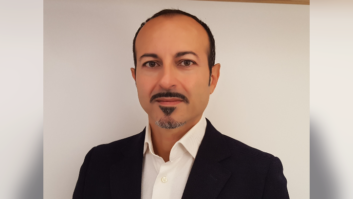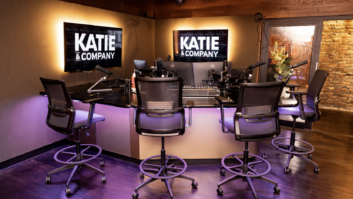
What should buyers of radio broadcast consoles know about important trends?
Marty Sacks is vice president of sales, support and marketing for the Telos Alliance. This is one in a series of interviews with industry console experts. An earlier version of this article appeared in the RW ebook “Trends in Consoles.”
RW: Marty what’s the most important trend in console design?
Marty Sacks: Today, consoles can do anything and everything the broadcaster wants and needs. It’s empowering. Just like a playlist, users can create new experiences for different operators with different styles, allowing creativity to float to the top, not buried by technical complexity. There is a trend towards power and technical sophistication hiding under the surface so to speak; but ultimately, users want more application-specific controls and dialed-in user experiences.
Our new Axia Quasar AoIP console, for example, was designed based on user and ergonomic studies, and has customizable features like new Source profiles, automatic mix-minus and automixing an all channels. Metering is built into the surface right wherever the user needs it, on every channel display, next to each fader, and the monitor module. Users can customize their Quasar via user-assignable buttons in the master touchscreen module and every channel strip. The trend in console design is that the user is king.
RW: It has been 16 years since Axia began offering professional radio gear that networks using Ethernet. What requests do you hear now from buyers that are different since then?
Sacks: In most cases, our customers are looking to us as their guide. Sure, there is the occasional feature request and we’ve done studies on usability; but for the most part, they allow us to set the tone for what to expect. We accomplish this role as their guide by removing obstacles in their way and giving them a multitude of tools. Our customers believe in the Telos Alliance because the tool — be it a sophisticated desktop console, a hybrid console/tablet, or a completely virtual model — is their choice. Their request is simple: Tell me I have no limitations of format and protocols and let me configure the console any way I want.
Our new iQx console is a good example of this. Nobody requested a standalone mixer than can drop onto AES67 networks with no external boxes or software and immediately begin working. We thought the market needed the option so we created it, and it has been very well received.
Another example is a driven by clients operating during the recent pandemic. There has been quite a lot of interest in our clients remotely operating their Axia consoles and other components of their Telos Alliance AoIP network while outside the broadcast facility. That was not a request in the early days yet is something that is happening a lot right now. We had already built this functionality into most of our gear — for many years now — so we were happy to be able to say yes to this very important request when it came up.
RW: What functions or features are offered that engineers who haven’t bought a console in a while should know about?
Sacks: We were all trained to think of consoles as standalone devices at the center of a studio. While this can certainly still be the case, there is so much more to consider. Now, it’s not the console that matters most. Thanks to AoIP, it’s the ecosystem. Our consoles can now communicate with cloud/virtual stream sources, have built-in talk show support, and configurations for our Telos Infinity IP Intercom brought to you by Axia Pathfinder control.
AoIP consoles can stand alone or be easily networked together to allow sharing of sources and automatic switching between the various operational modes (or call letters) a cluster might have, like live shows and voice-tracking during other time periods when the console is no longer needed. If you have one building running two stations with different call letters, one console is all you need, because you can set it up how you want. Again, the user has more options than ever thanks to the flexibility of AoIP networks.
RW: What’s an example of a notable recent installation?
Sacks: Legendary Los Angeles station KCRW 89.9 FM recently completed its $38 million headquarters at Santa Monica College’s Center for Media and Design. It was more than a decade in the making. The headquarters features 11 audio over IP studios that speak to the power of the networked ecosystem.
KCRW Chief Engineer Steve Herbert and broadcast IT engineer Jon Connolly worked with Key Code Media’s Edward Locke, Axia specialist Gregory Dahl, Telos Alliance’s John Bisset and Broadcast General Store to specify and set up a powerful, interoperable Livewire network with 12 Axia Fusion AoIP consoles, several Telos Alliance xNodes, Axia IP-Tablets and Axia Pathfinder Core Pro control. Each of the 85+ KCRW employee workstations and audio consoles are networked for sharing and collaboration. It’s a beautiful example of the power of the ecosystem.
RW: Any best practices or errors to avoid, for buyers?
Sacks: Those in the market for a console need to know that they are buying way more than a console. They are buying a company. What does that company offer that will help the customer realize all their audio hopes and dreams and create the most exciting audio experiences imaginable for their audience? At Telos, our goal is to be the Yoda to our broadcasting Jedi Knights. We want to help them along with our 115+ Livewire partners, on their audio journeys in an endeavor that does not stop after the business transaction of buying a console is complete. We will of course support and service the product, but will also be there as the customer’s needs grow and evolve. Since consoles now have a software component, it’s also more important now than ever to choose a manufacturer that is stable and is going to be around for the foreseeable future.







